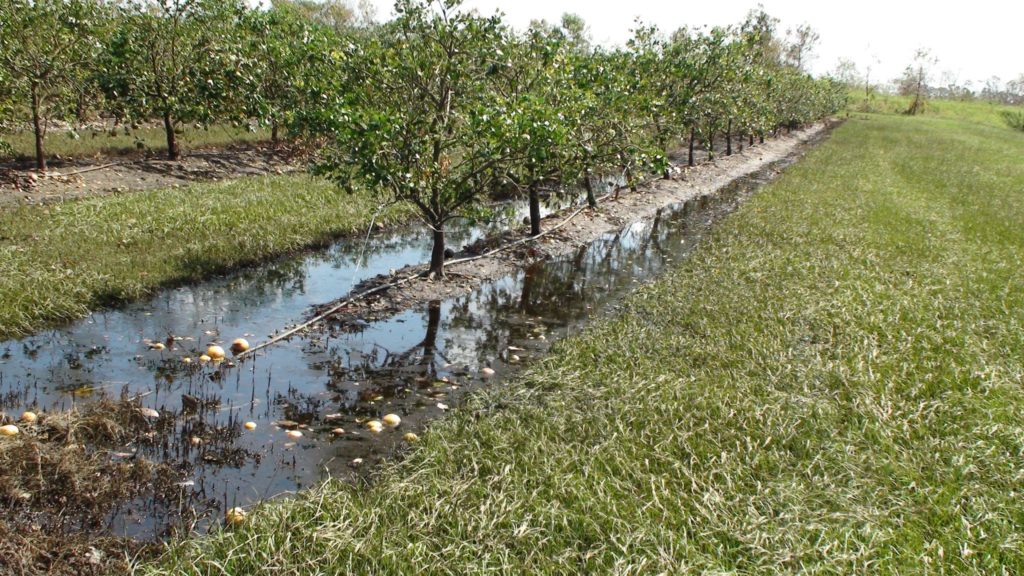By Clint Thompson
Hurricane Ian’s impact on seasonal crops, livestock, nursery and aquaculture will cost Florida farmers between $787 and $1.5 billion. University of Florida Institute of Food and Agricultural Sciences economists hope to narrow that financial impact as additional data is obtained from farmers.

Christa Court, UF/IFAS assistant professor of regional economics and director of the economic impact analysis program, discusses the initial assessment by UF/IFAS.
“The way we’ve set it up, that’s a credible range on the average. My assumption is that as we get more information, it will narrow that range,” Court said. “The final number is most likely to be somewhere in between. Whether it’s closer to the $1.56 billion or the $787 million is most likely going to be determined by what we’re hearing about what has happened on those flooded lands. It is accounted for, but it is the numbers that we’re probably not receiving enough information on. Because even if the growers are out there assessing, they’re not real sure what’s going to happen to that crop; whether they have lower quality or are going to lose it.”
Court said her department hopes to release its next assessment in mid-November. That will largely depend on farmers’ abilities to relay information from the field.
“Even when they are able to assess the fields or get their ability to communicate back to us back, they’re focused on getting everything back up and running first. They’ve got to clear their roads and make those repairs to buildings that have damage. Then they’ll worry about starting to report to us,” Court said.
Hurricane Ian made landfall along the west coast of Florida as a Category 4 storm on Sept. 28. It devastated citrus groves, destroyed some vegetable crops and blueberry bushes and delayed strawberry plantings.










